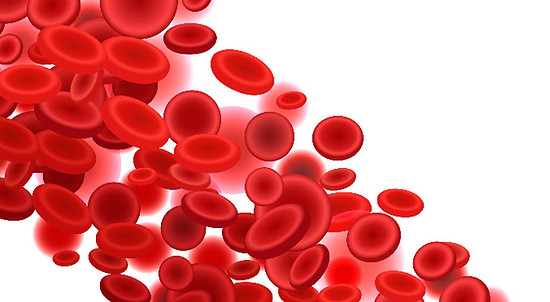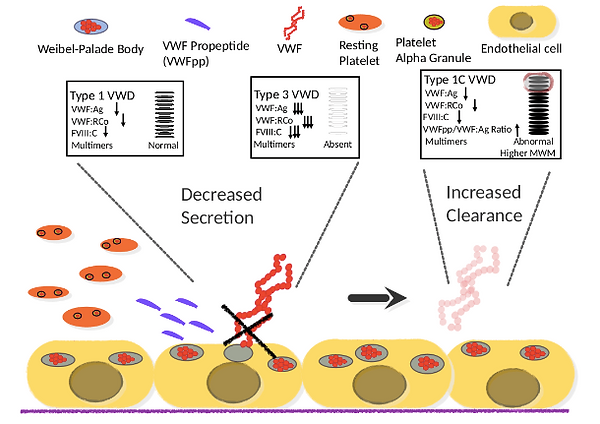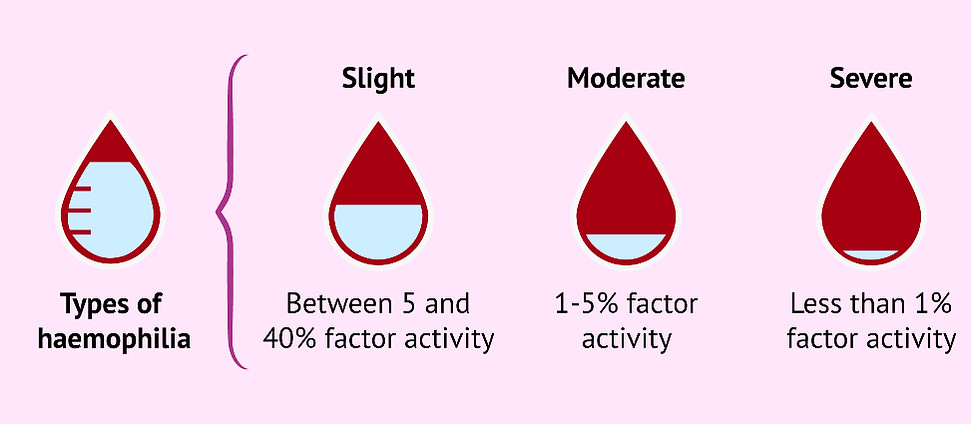top of page

Bleeding
Bleeding can be a highly traumatic experience for anyone. The term "bleeding" often suggests an acute event, but it can also be chronic. Bleeding disorders can generally be classified into two categories: genetically inherited disorders and acquired causes. Effective management of bleeding disorders requires careful evaluation and attention.
Von Willebrand Disease
Von Willebrand Disease (VWD) is the most common bleeding disorder in the world with Autosomal Dominant inheritance. Large proportion of ladies with menorrhagia actually if we dissect their family history, they could be a VWD patient. This disease has wide spectrum of clinical behaviors.

Figure 1. Quantitative defects of von Willebrand factor, as seen in von Willebrand disease types 1 & 3. In the classic presentation, type 1 VWD sees a decrease in VWF:Ag, VWF:RCo, and FVIII:C, and multimer levels are normal. Type 3 VWD presents with the same decreases, but to a much greater degree, and multimers are absent. Types 1 & 3 both show decreased secretion. Type 1C presents similar decreases to type 1, but shows an increase in the ratio of VWFpp to VWF:Ag and an abnormally high quantity of multimers, as well as increased clearance. https://dipaolalab.wustl.edu/research/von-willebrand-disease/
Haemophilia A & B
Haemophilia is an X-linked Disease which affect the Male with female being the carrier. It has a spectrum of disease from Mild to moderate to Severe. Hemophilia is a rare disorder in which the blood doesn't clot in the typical way because it doesn't have enough blood-clotting proteins (clotting factors). If you have hemophilia, you might bleed for a longer time after an injury than you would if your blood clotted properly.

bottom of page


